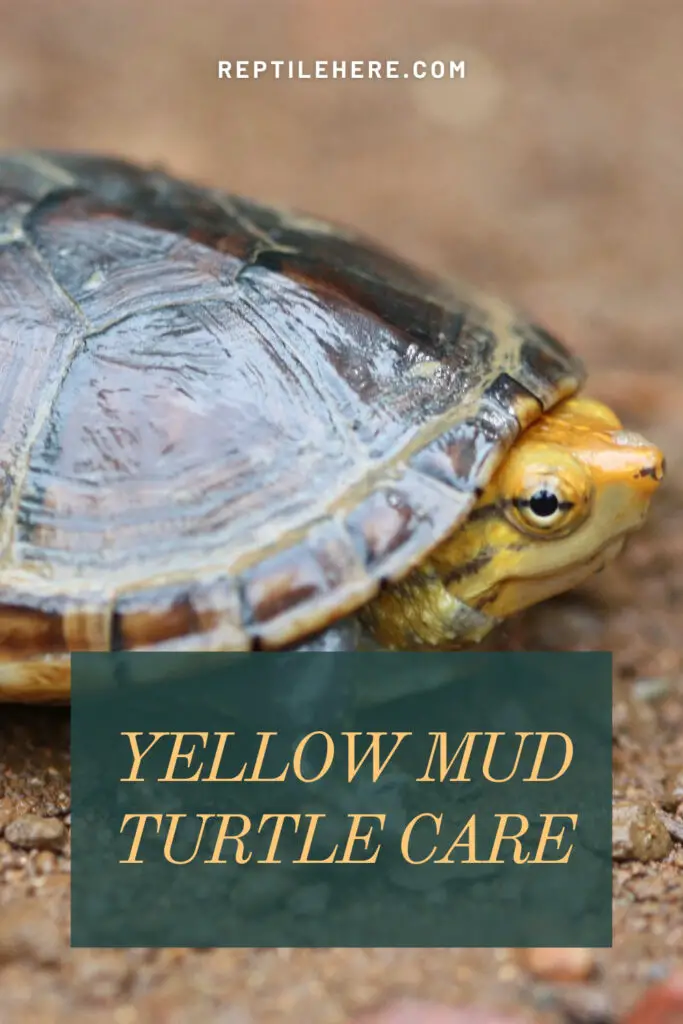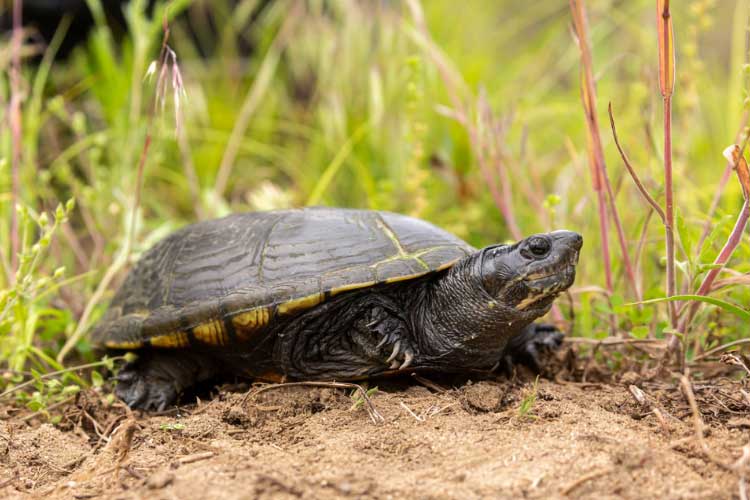Yellow Mud Turtle Care: Everything That You Need To Know
Yellow mud turtle is one type of semi-aquatic olive color small animal. Due to their food habits and behavioral characteristics, they are excellent pets for beginners. Even you can also keep it as a pet with minimum effort.
So how to maintain a yellow mud turtle care. In this case, you must maintain water hygiene, proper water level, lighting, and temperature. Also, you need to provide essential nutrients from time to time.
In this article, we will enlighten you about several basic information about this turtle species. You will also learn about the in-depth process of taking proper care of them. So, what are you waiting for? Let’s go through the article.
Basic Info about Yellow Mud Turtle
Contents
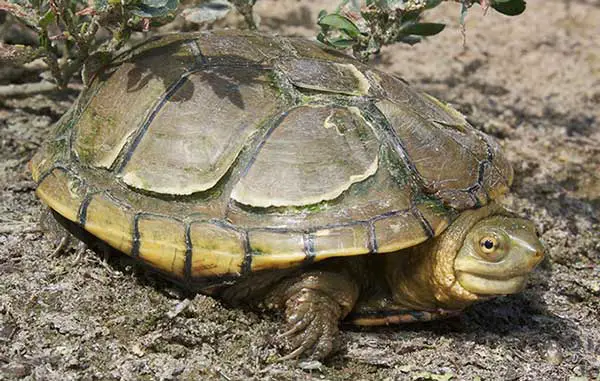
In this section, we will look into several basic pieces of information about this turtle.
| Attributes | Information |
| Scientific Name | Kinosternon flavescens |
| Common Name | Yellow neck turtle |
| Adult Size | Female adult yellow turtle has an 11.4 cm size on average. In comparison, the male one’s length is 14 cm |
| Max Size | 10.2-15.2 cm |
| Lifespan | Can live up to 40 years on averageTypically, in the wild, they have a lifespan of 15 years, whereas, in captivity, their lifespan becomes ten years |
| Diet | They are omnivorous. That means they feed on both seawater plants like duckweed and animalsMainly, frogs, snails, leeches, tadpoles, fish, crayfish, earthworms, and other animals are on their diet list |
| Range | From Mexico’s northern part to the north side till NebraskaOklahoma, New Mexico, western Kansas, and the southeast part of Arizona |
| Behavior | They Hibernate generally in the winter season but may also in the summer season due to extreme heat. During this period, they bury themselves in mud and remainExerts bad-odoring musk when they feel threatened by any predators or unfamiliar things |
| Clutch Size | 1-9 eggs |
| Extinction status | Generally not endangered. But in a few parts of the globe, such as in central Illinois and northeast Missouri, their population is instinct |
Are Yellow Mud Turtles Easy To Take Care Of?
Yes. Yellow mud turtles are very friendly and easy to take care of. They require relatively less maintenance than any other turtle species. The main reason behind this is their small size.
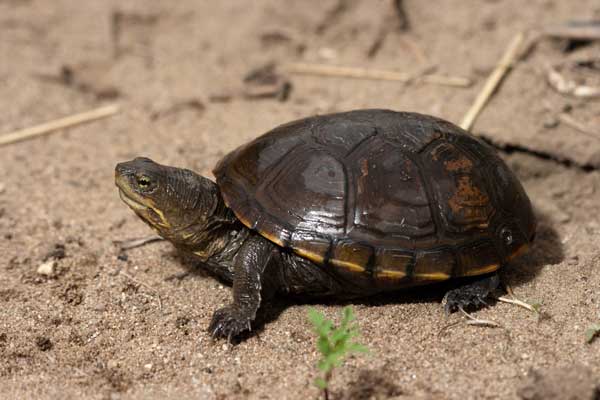
A yellow mud turtle seldom grows larger than 5 inches. Therefore, they can adjust themselves well to any optimal size home. As both animals and plants are on their diet list, it will be easy for you to find their food. Besides, many commercial brands of their food are also available in the market.
Overall, their characteristics, diet, and behavior make their maintenance more manageable.
How To Take Care Of A Yellow Mud Turtle?
Though taking care of this mud turtle is relatively easy, you must meet some requirements. For your better convenience, we made a yellow mud turtle care sheet.
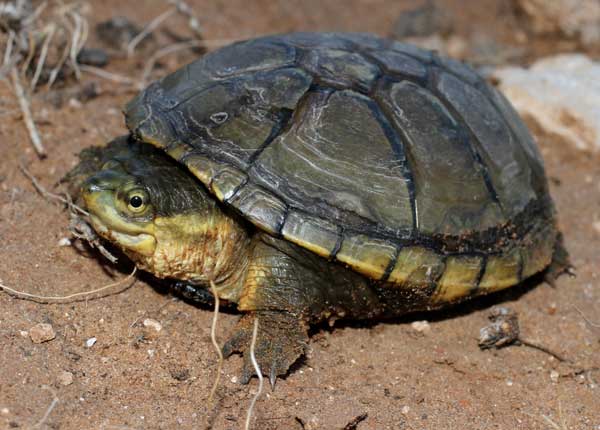
1. Adequate space
As Kinosternon flavescens are tiny in size, they don’t need that much space. For a full-grown yellow mud turtle, a space of 21-inch height, 18-inch width, and 48-inch length are enough. If you can provide a more spacious place for them, it will be more beneficial.
You might know that they don’t attack each other. That’s why you can keep more than one turtle in one tank.
2. Temperature
If you are taking care of a yellow neck furtle, temperature maintenance is the most crucial part. Slight fluctuations in their desired temperatures may cause disturbance in their physical and metabolic activities. Here are some of their preferred temperature ranges:
| Criteria | Temperature (°F) |
| Basking | 85-93 |
| Air | 78-82 |
| Water | 74-78 |
3. Food
This animal mainly feeds on small animals and plants. However, you have to serve them proper food according to their nutritional need. If the turtle is under six months old, only protein or pellet food will be enough for them.
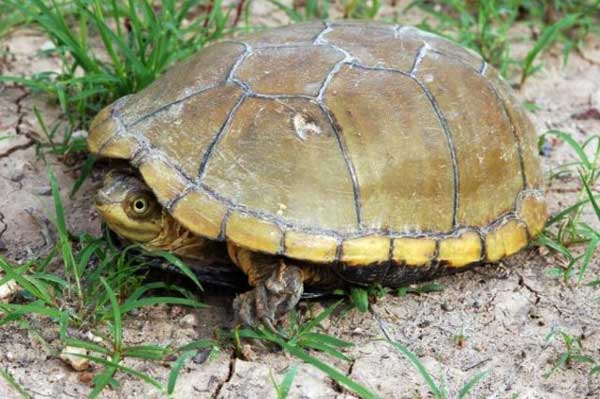
But if it is older than six months, you need to provide vegetable food along with the pellet and protein foods. A protein meal per day is quite beneficial for them. Besides, you can offer food several times a week. Also, please provide daily calcium supplements to them.
| Food types | Sources |
| Vegetables | Algae, duckweed, parsley, lettuce, pond lily, water hyacinth, etc. |
| Fruits | Berries, melons, and apples |
| Protein | Earthworms, grasshoppers, crayfish, snails, shrimps, clams, cruces, tadpole, etc. |
| Additional foods | Pellets, frozen fish, and calcium and vitamin D supplements |
| Prohibited food | Dairy items, dog food, dried items, candy, fast foods, etc. |
4. Water level
This turtle likes to spend time on the land. That’s why tanks with adjacent accessible land will be suitable for them. The water level should be such that the turtle can reach the surface level by tip-toeing.
Though turtles hibernate during the cold season in the wild, in captivity, the scene is different. You don’t need to provide mud for their hibernation.
5. Proper lighting
Yellow neck turtle requires proper exposure to the lighting. Because they need sufficient D3 vitamin for the appropriate absorption of calcium in their body. This will enhance their appetite and immune systems.
Therefore, during summer, you need to ensure 14hrs of lighting for them per day. While in winter, they need 10 hrs of light in a day.
6. Basking
Yellow mud turtles are ectothermic. They adapt their metabolic mechanism to the variable surrounding temperature. Thus, they must bask. You need to provide them with an appropriate basking area that is easily accessible.
7. Water maintenance
You need to clean their water often to prevent the risks of various infections in their body. Therefore, you might need to change the 30% of tank water every week or take proper steps to keep the water clean.
Also, rocks in their tank get first- with time. In this case, you should use diluted bleach to clean those and wash them in clean water before placing them into the tank.
Pouring their food into the tank can make the water messy. So, it will be a wise decision if you arrange a separate tank for their feed purpose. After that, you can transfer your turtles again to the standard tank.
Can You Keep a Yellow Mud Turtle As A Pet?
The answer is yes. You can keep a yellow mud turtle as a pet. But this turtle is quite sensitive to its surrounding environment. That’s why it’s not suitable for too young children. If you are aged enough to take proper care of them, you can only keep them as pets.
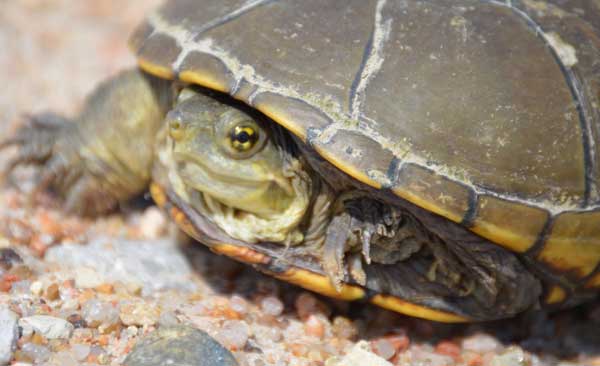
What Does A Yellow Mud Turtle Need In A Tank?
If you want to keep a yellow mud turtle as a pet, you must provide some equipment in the tank. Those are:
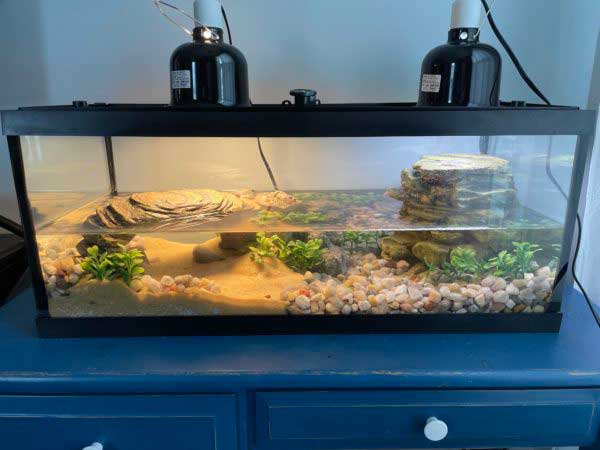
- Water filtration equipment: This is necessary for keeping the tank water clean and recirculating fresh water.
- Heating system: A water heater will keep the tank water warm, which is suitable for their hibernation. Also, cold water can cause numerous diseases in them. So, for a 40 gallons tank, a water heater of 150 watts will be enough.
- Dock for basking: It needs an adjacent basking dock for them where they can soak heat from the outside.
- Proper lighting: In the wild, they get adequate lighting from the sun. But in the tank, you need to attach some UVB lighting equipment which creates an equivalent effect as sunlight.
- Substrates: There are no beneficial effects of substrates like gravels at the bottom of the tank. But it will increase the aesthetic view. Also, turtle love to play with those.
- Decorative accessories: Adding some plants, rocks, or stones will improve the appearance and also provide them with hiding spots.
Why Taking Care of Yellow Mud Turtles Is Necessary?
This turtle species has a vital role in the ecosystem and mankind. Their importance makes it obvious to take proper care of them. A few reasons behind this are:
- Yellow neck turtles maintain the population of many amphibians and small fishes by eating them.
- You can also use their feces as a soil fertilizer.
- Due to climate changes, their natural habitats are reducing day by day. In some region of the globe, the yellow-neck turtle is announced as endangered by the govt. That’s why proper care of them is necessary to prevent them from extinction.
Several Cautions While Taking Care Of A Yellow Mud Turtle
You need to be cautious if you have a pet yellow mud turtle. They are pretty prone to numerous diseases. Sometimes, you can also be affected by your yellow mud turtle. Some cautious are:
- Vitamin A deficiency can cause infection in the respiratory tract.
- Suppose you find any small cut on their shell, apply antibiotics to those wounded places. Otherwise, their shell will rot and cause an unpleasant odor.
- Take your pet turtle to the vet if you notice eye issues like puffy, shut, bloody, or sunken eyes. Late treatment can take their eyesight for good.
- Avoid overfeeding this mud turtle to prevent kidney stones and liver failure.
- Wash your hand after touching the turtle because they can spread salmonella among people.
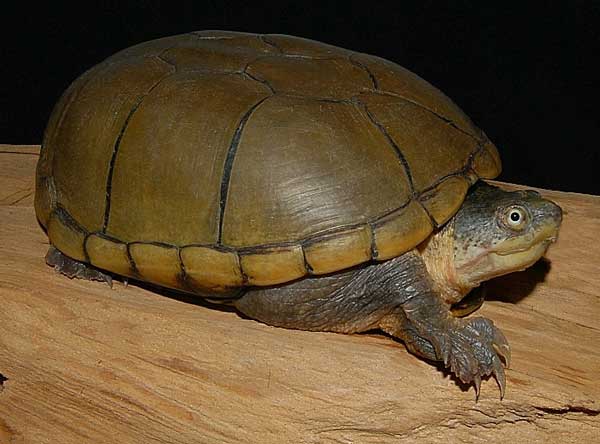
Final Words
Yellow mud turtle is a beautiful species of mud turtle. Right now, they are not endangered. But rapid climate change is affecting their natural habitats. That’s why people need to be concerned about taking care of them.
If you have been here from the start, you already know the Yellow Mud Turtle Care process in detail. Make sure to follow them correctly; this will not take much effort. But you need to follow some caution when you are handling a yellow-neck turtle. Otherwise, this might affect both your turtle and your health.
